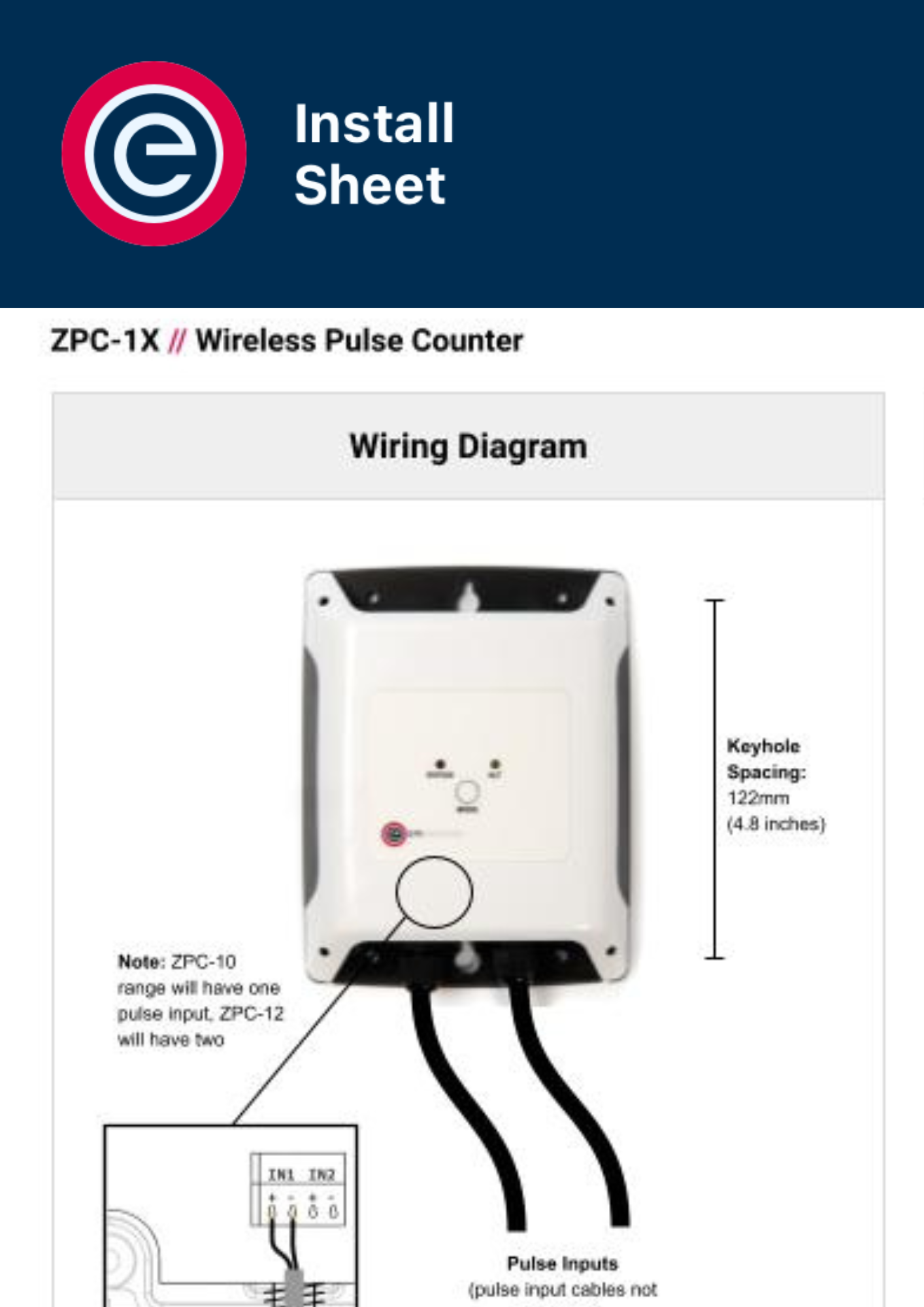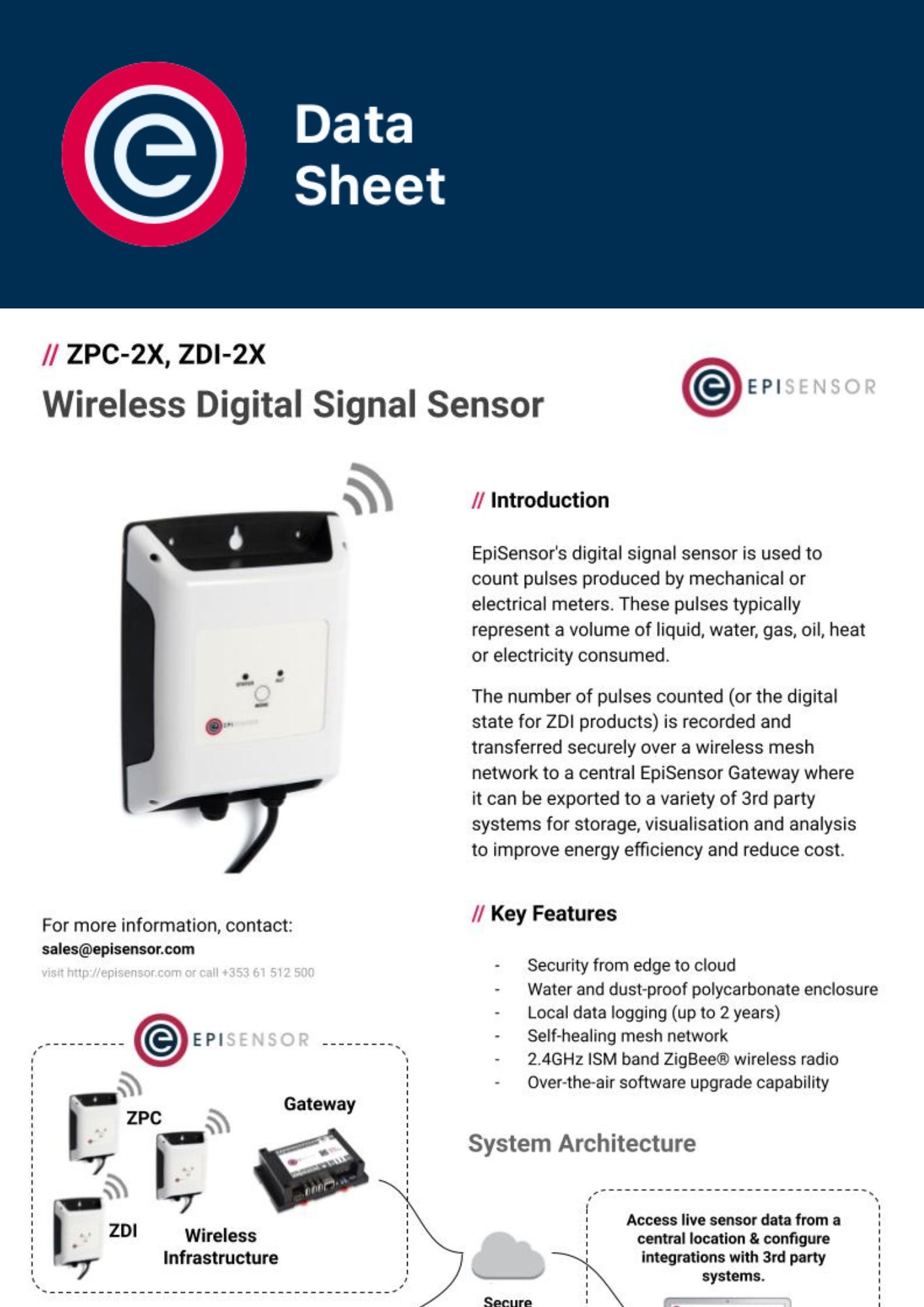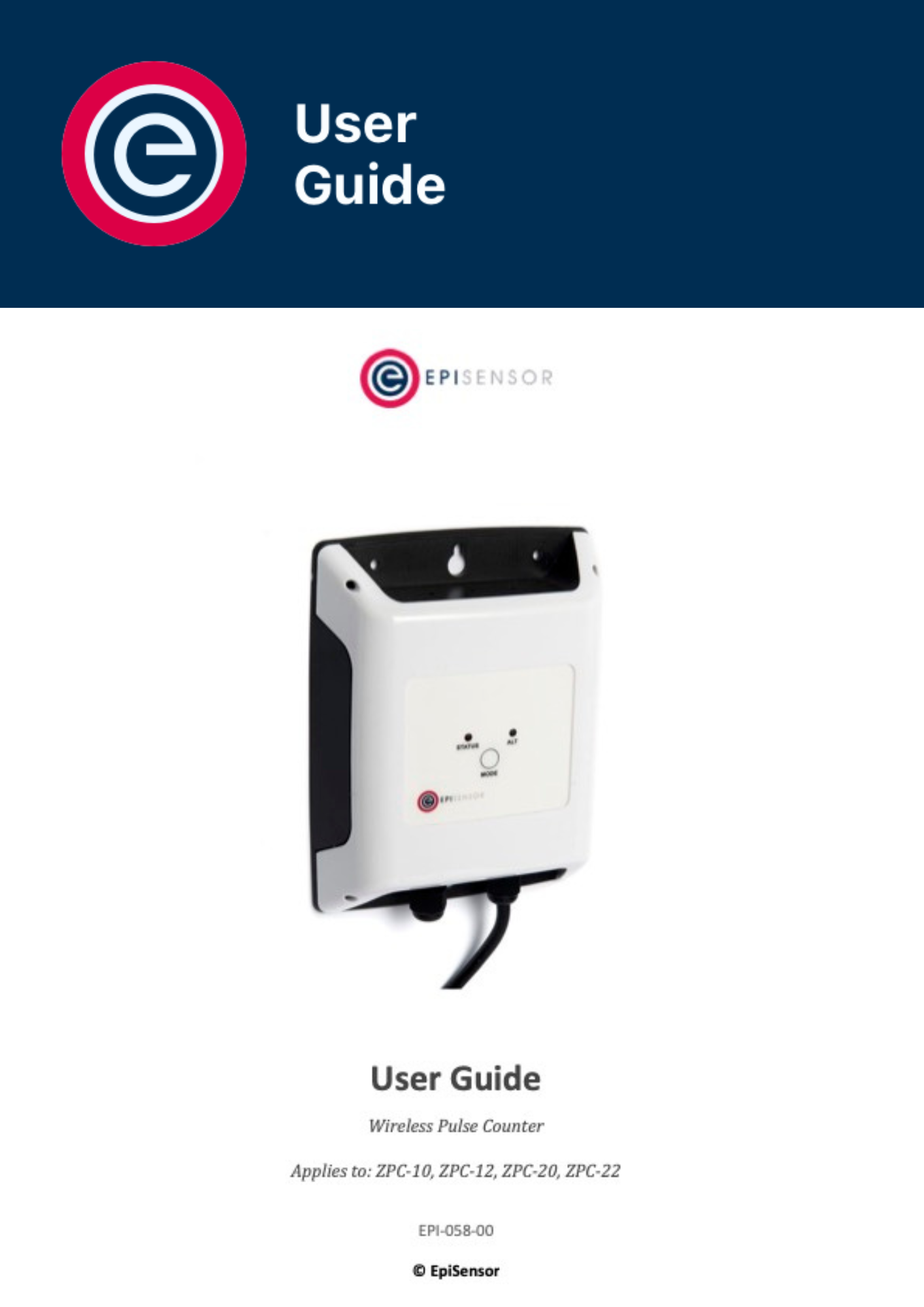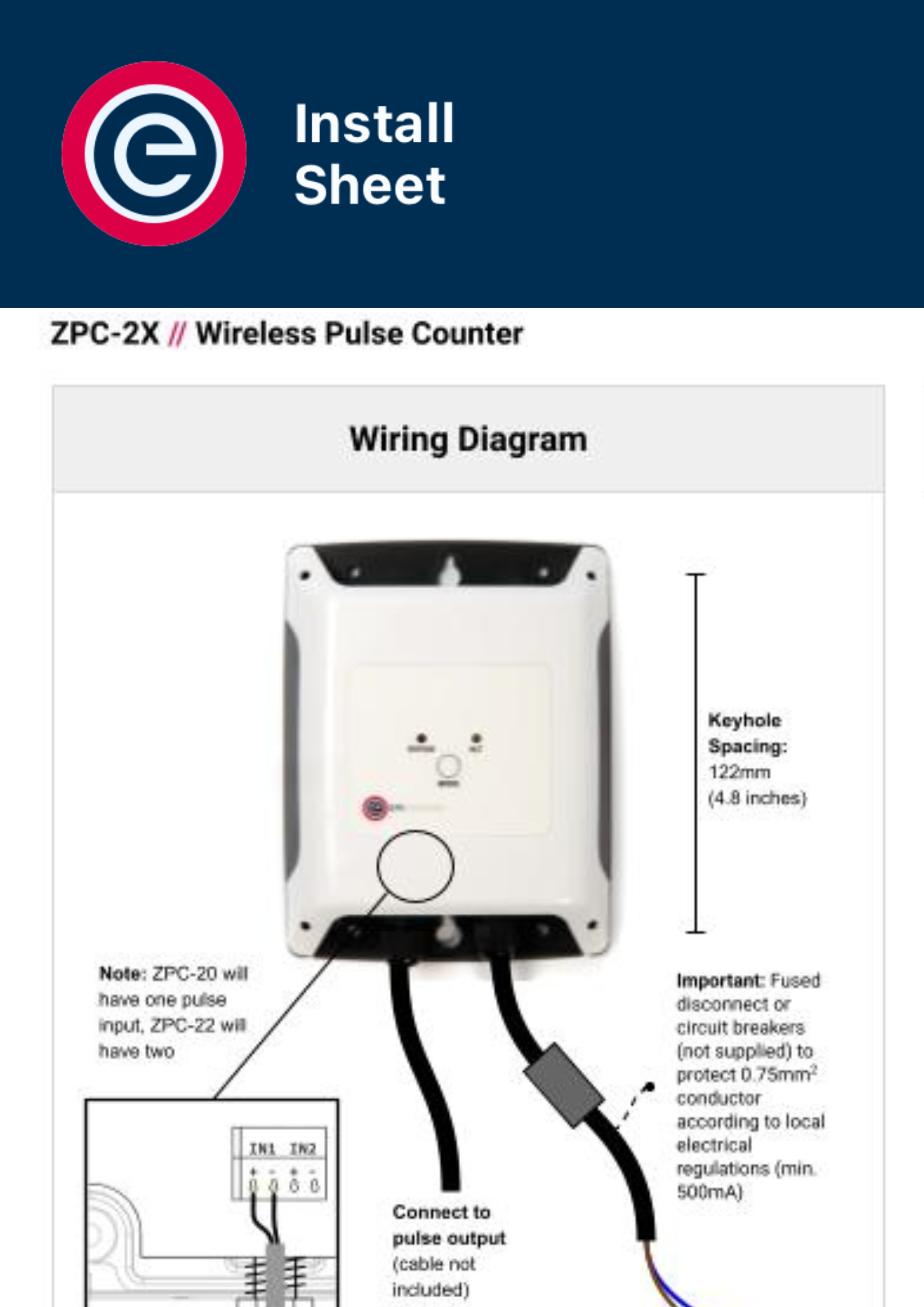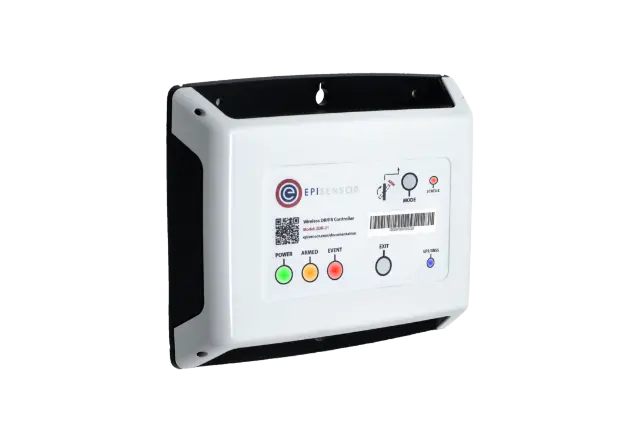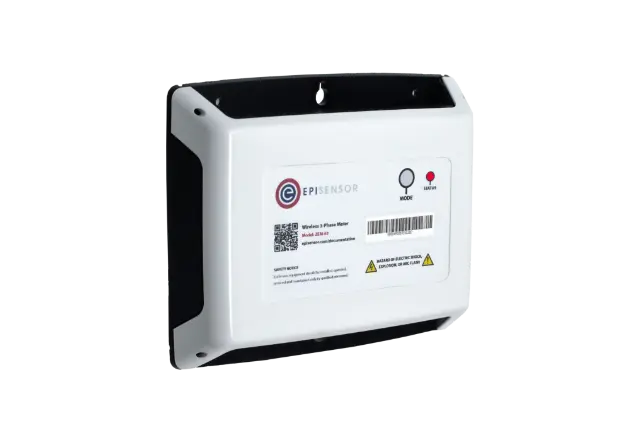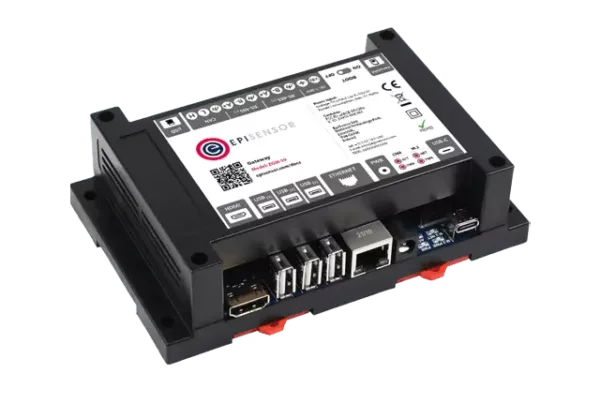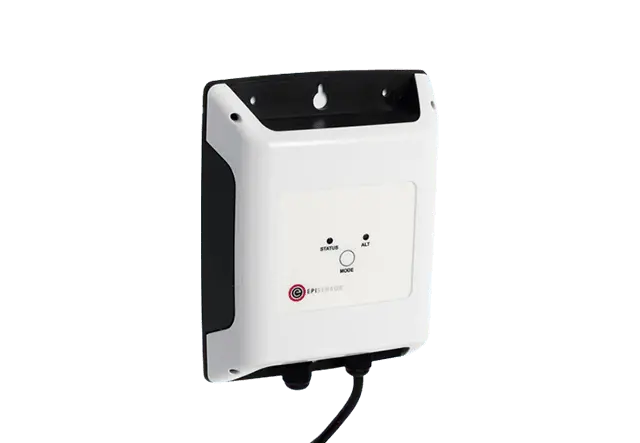

Wireless Digital Signal Sensor (ZPC/ZDI)
The Wireless Digital Signal Sensor (ZPC/ZDI) is a digital signal sensor used to count pulses produced by mechanical or electrical meters. These pulses usually represent a volume of liquid, gas, or electricity consumed. The number of pulses counted in a particular time period is recorded and sent to EpiSensor Gateway at a configurable interval.
It is also possible to monitor the state of a dry contact switch with EpiSensor’s ZDI product. This is useful for monitoring machine status or alarm signals. When changes to the state of the switch is detected, a data point is sent to the EpiSensor Gateway. The ZDI can also be configured to send data on the % time a digital signal has been high/low, and the number of state change events detected in a period of time.
Large networks of Wireless Digital Signal Sensor units can be connected to a central EpiSensor Gateway. If wireless communications break down, up to 70,000 data will be logged automatically on the device. The Wireless Digital Signal Sensor has on-board ZigBee wireless communications, is housed in a waterproof polycarbonate enclosure, and is available as a battery-powered or mains-powered unit, which can monitor both dry contact and active pulse outputs. Note: Mains powered versions of the Wireless Digital Signal Sensors must be installed by a qualified electrician.
